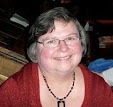Elephants for one reason or another are fascinating animals. In Leaving Time, the reader will learn a massive amount of information about them, their habitat in Africa, and the process by which they come into this world and what happens to their herd when they die. Picoult has researched meticulously for this book and presents it in a scholarly, but approachable way.
The novel is narrated by the four main characters and switches location between a New England elephant sanctuary and the savannas of Africa. Jenna Metcalf is the 13 year old daughter who has been left virtually an orphan as a result of her mother, Alice's disappearance. Alice was an elephant researcher in Africa before she became pregnant with Jenna and returned to the United States. As the novel opens, Jenna is searching and determined to find her mother. There had been an accident at the sanctuary during which a handler had been killed and her mother had been seriously hurt. Mysteriously, Alice disappears from the hospital and is never heard from again. All of this was too painful for Jenna's father and he is now in a mental institution with no recollection about all that happened that night nearly 10 years before where the novel picks up. And so Jenna enlists the aid of a down and out psychic, Serenity Jones, and a washed-up, alcoholic cop, Virgil Stanhope. Stanhope was one of the original investigators of the accident and feels compelled to help the teenager because of the lack of a thorough investigation when it happened.
 |
| Jodi Picoult autographing Leaving Time |
Once you start this book, it holds you mesmerized until the end. Great read and a great lecture by Jodi Picoult.




















